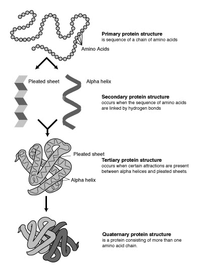
Photo from wikipedia
Drug-protein interactions (DPIs) underlie the desired therapeutic actions and the adverse side effects of a significant majority of drugs. Computational prediction of DPIs facilitates research in drug discovery, characterization and… Click to show full abstract
Drug-protein interactions (DPIs) underlie the desired therapeutic actions and the adverse side effects of a significant majority of drugs. Computational prediction of DPIs facilitates research in drug discovery, characterization and repurposing. Similarity-based methods that do not require knowledge of protein structures are particularly suitable for druggable genome-wide predictions of DPIs. We review 35 high-impact similarity-based predictors that were published in the past decade. We group them based on three types of similarities and their combinations that they use. We discuss and compare key aspects of these methods including source databases, internal databases and their predictive models. Using our novel benchmark database, we perform comparative empirical analysis of predictive performance of seven types of representative predictors that utilize each type of similarity individually and all possible combinations of similarities. We assess predictive quality at the database-wide DPI level and we are the first to also include evaluation over individual drugs. Our comprehensive analysis shows that predictors that use more similarity types outperform methods that employ fewer similarities, and that the model combining all three types of similarities secures area under the receiver operating characteristic curve of 0.93. We offer a comprehensive analysis of sensitivity of predictive performance to intrinsic and extrinsic characteristics of the considered predictors. We find that predictive performance is sensitive to low levels of similarities between sequences of the drug targets and several extrinsic properties of the input drug structures, drug profiles and drug targets. The benchmark database and a webserver for the seven predictors are freely available at http://biomine.cs.vcu.edu/servers/CONNECTOR/.
Journal Title: Briefings in bioinformatics
Year Published: 2019
Link to full text (if available)
Share on Social Media: Sign Up to like & get
recommendations!